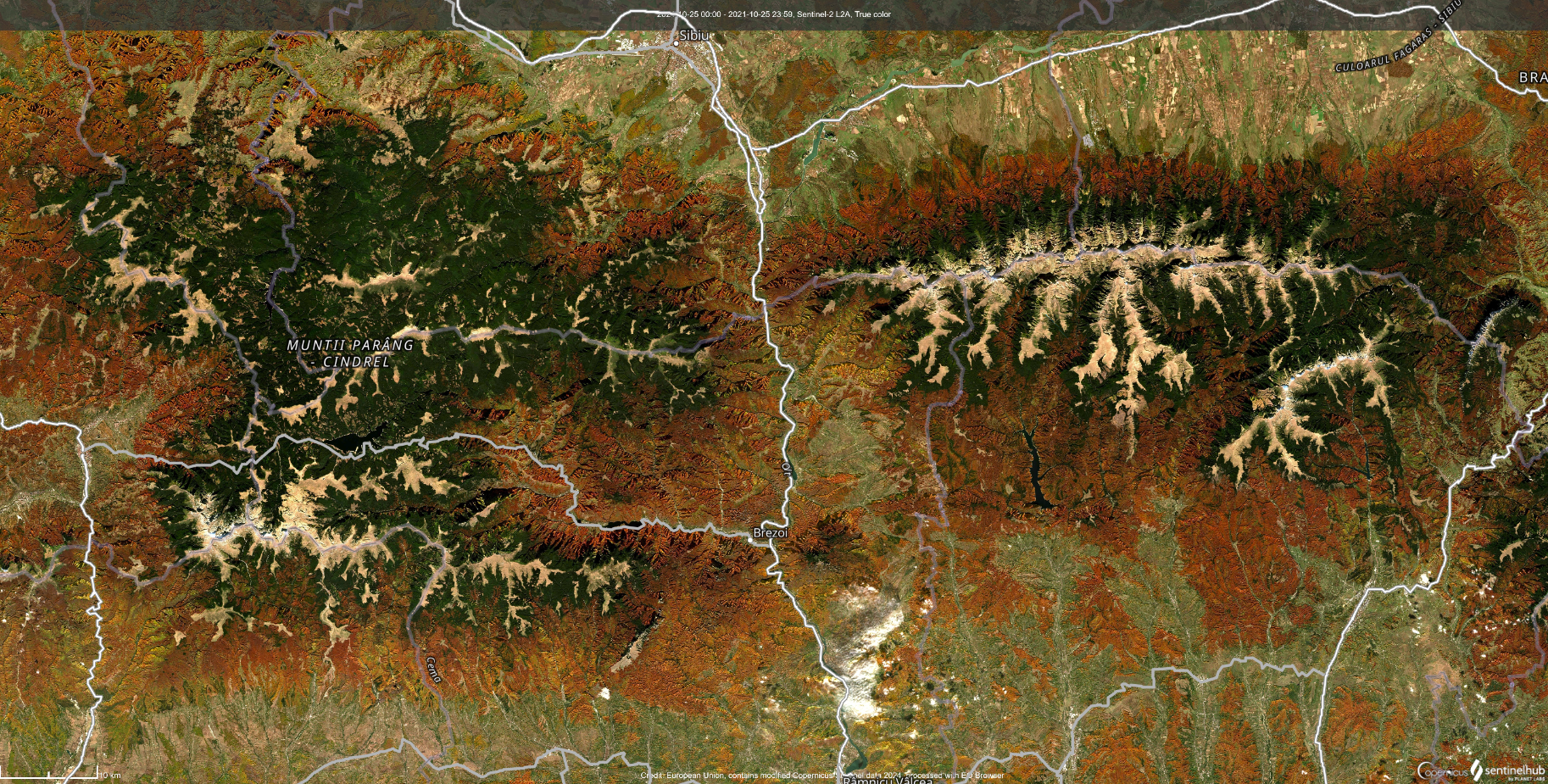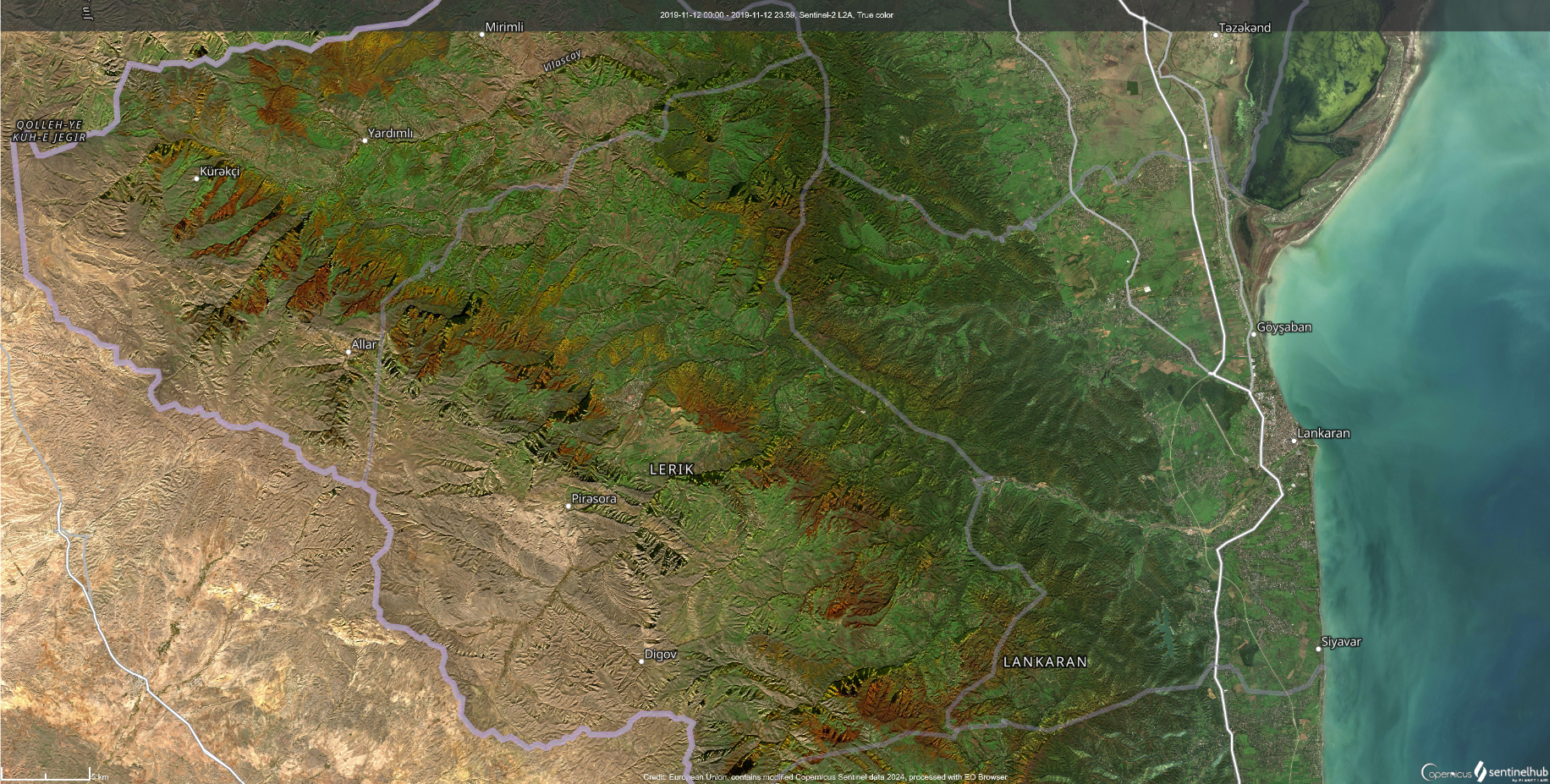
September 3, 2024

Seasons ebb and flow across the globe as if the earth itself were breathing a steady cadence. Between summer's warm exhale and winter's cold inhale lies a brief window where the landscape seemingly holds its breath. For a few days each year, bright reds, yellows, and golds adorn the canopies of deciduous forests and tundra brush alike. What's the common thread?
Cold nights and short days.
As the earth orbits about the sun, it's axial tilt brings in a change in daylength at off-equator locations. These changes are most dramatic near the poles, where the diurnal pendulum swings from 24-hr daylight to 24-hr nighttime over the course of a year. In the mid-latitudes, where cities like New York, London, Moscow, Santiago, and Beijing reside, days can be as short as eight hours and as long as sixteen. As summer turns to winter, the days grow shorter, and temperatures begin to cool.
Given the unilateral change in daylength across the globe, the question must be asked: "Is fall foliage a global phenomenon?"
Well, the short answer is yes! And no. Kind of?
Ok, maybe there is no short answer…
Daylight hours are not the only determining factor of temperature and fall foliage timing. Proximity to large bodies of water, land cover, precipitation patterns, and many more factors must be considered! The conditions that make New England a hotbed for stunning fall color are far from common in the global sense.
Perhaps the most common inhibitor of fall foliage in the mid-to-high latitudes is the absence of deciduous trees. You might be saying, "Duh, of course places with no trees don't have fall foliage", but wait just a minute! Some of the best displays of fall color on the planet happen on the tundra, where there's not a tree in sight. Regardless, grasslands and deserts generally do not provide any meaningful fall color. With that sorted, let's look at some less common limitations.
Large bodies of water are slow to change temperature as the days grow shorter, despite the air cooling much more rapidly. As a result, locations near lakes and oceans typically experience more mild nights and a slower color change each fall. Additionally, rain and persistent cloud cover reduce the efficiency of radiational cooling—the primary method by which the atmosphere cools at night. This has a similar effect to that of a large body of water, preventing nighttime temperatures from cooling to the levels needed for fall color.
With that brief science lesson out of the way, it's time to dive into the locations across the globe that do experience brilliant fall colors!
Starting with one of the most well-known fall foliage destinations in the world, New England offers a jaw-dropping display each fall, without fail. Even in years with extreme weather, these forests consistently produce beautiful, clean fall colors. The high concentration of maple trees gives this region a distinct red hue; however, there is ample biodiversity in place to produce an assortment of every fall color imaginable. Peak color generally occurs in October; however, a few locations peak in later September and early November each year.

Venturing further north in North America, Alaska and Canada produce brief, albeit stunning fall colors in August and September. The shrubs and grasses that cover the tundra in the northernmost latitudes turn a deep red in August, ushering in the first sign of northern hemispheric fall. As the reds begin to fade, and handoff occurs with the deciduous forests—full of quaking aspen, black cottonwood, and alder trees. This secondary peak is primarily yellow, and may linger into early October in some years. Anchorage and Fairbanks generally see peak fall color in mid-to-late September, with vivid, golden aspen blanketing the landscape.
You almost certainly knew about the fall colors in New England, and I reckon there's a good chance you knew about Alaska as well. Are you ready for some more surprising locations?

Iran (yes, the country you thought was entirely desert) boasts localized displays of intense fall color each November and December. Moist air from the Caspian Sea drifts south before rising up and over Alborz Mountains, drenching the mountains in rain while denying the rest of Iran a reliable precipitation source. As such, the Alborz are quite fertile, and they support large deciduous forests. Additionally, the higher elevations allows the soil to maintain its moisture in the face of cooler temperatures, while the rest of Iran scorches to the south.
In Eastern Europe, vast forests turn yellow, orange, and red each October. All things considered, the fall colors in Slovakia, Ukraine, and Romania may rival those in the northeastern United States. In particular, the forests in the Parâng Mountains of Romania seemingly change at the same time, resulting in a widespread peak in fall color unlike anywhere else on earth.

Journeying back to the Western Hemisphere, we'll looking to South America for some Southern Hemispheric fall color. Patagonia is well known for its dramatic landscapes, featuring spires of granite thousands of feet tall and enormous, calving glaciers. Amidst this landscape lies a small selection of deciduous trees that turn bright red and orange in the fall. But wait, when is fall is the Southern Hemisphere? Summer's warmth in December and January fades by April, allowing for a quick shot of vibrant color!
Last but not least, we have a real oddball in southern Africa. It's not fall foliage, but rather, spring foliage! The Miombo woodlands undergo a period of vibrant color each spring, and if you didn't know better, you'd think it was fall foliage.
Objectively, the United States features the best, most accessible fall color on earth. You'll find the most widespread displays in the Northeast, however, fall foliage can be found in every state—barring Hawaii. In New England, the combination of a diverse range of tree species—such as sugar maples, birches, and oaks—creates a vibrant tapestry of colors that draws millions of visitors each autumn. The cultural significance of autumn in the U.S., celebrated with harvest festivals and traditions like leaf-peeping, further enhances the appeal, making it a top destination for fall foliage enthusiasts.
Japan’s autumn season is a mesmerizing spectacle, deeply rooted in the country’s cultural and aesthetic traditions. Known as "koyo" in Japanese, the viewing of fall foliage is a popular activity, much like cherry blossom viewing in the spring. The country’s diverse landscape, from the northern island of Hokkaido to the southern regions, provides a long and varied fall season. Kyoto, with its historic temples and gardens, becomes a riot of color as the maple and ginkgo trees turn brilliant shades of red and yellow. Nikko, a UNESCO World Heritage site, is another prime destination, where the foliage is framed by ancient shrines and mountainous landscapes. The Japanese Alps offer a more rugged experience, with dramatic changes in elevation providing different foliage experiences.
Canada, particularly in the eastern provinces of Ontario and Quebec, is renowned for its spectacular fall foliage, which rivals that of its southern neighbor, the United States. The country’s vast forests are dominated by maple trees, which are famous for their deep red and orange leaves. The Laurentian Mountains in Quebec and the Algonquin Provincial Park in Ontario are among the top spots for leaf-peeping, where the vibrant colors are set against pristine lakes and rugged landscapes. The country’s relatively sparse population in these areas means that visitors can often enjoy the fall colors in peace and solitude, away from the crowds. Canada’s extensive network of national and provincial parks provides ample opportunities for hiking, canoeing, and camping, allowing visitors to fully immerse themselves in the autumnal splendor.
South Korea’s fall foliage is a feast for the eyes, with its mountainous terrain offering some of the best views of the changing leaves. The country’s well-preserved national parks, such as Seoraksan and Naejangsan, are famous for their autumn landscapes, where the vibrant reds, oranges, and yellows of the trees contrast with the granite peaks and serene temples. Nami Island, a popular destination for both locals and tourists, becomes a colorful paradise in the fall, with its tree-lined paths turning into tunnels of bright foliage. The country’s smaller size means that the foliage season is relatively short but intense. South Korea’s fall is also a time for festivals and traditional celebrations, adding a cultural layer to the natural beauty.
Romania, with its diverse landscapes and rich cultural heritage, is an underrated gem for experiencing breathtaking fall foliage. The Carpathian Mountains, which stretch across the country, are home to vast forests of beech, oak, and conifer trees that burst into vibrant shades of gold, red, and orange during the autumn months. One of the most scenic routes is the Transfăgărășan Highway, which winds through the Făgăraș Mountains, offering spectacular views of the colorful forests and mountain peaks. Additionally, the charming medieval towns of Transylvania, such as Brașov and Sibiu, are surrounded by picturesque landscapes that come alive with autumn hues, making them perfect destinations for both nature lovers and history enthusiasts. Romania’s relatively mild autumn weather and the cultural richness of its villages, where traditional practices are still preserved, add a unique charm to the fall experience.